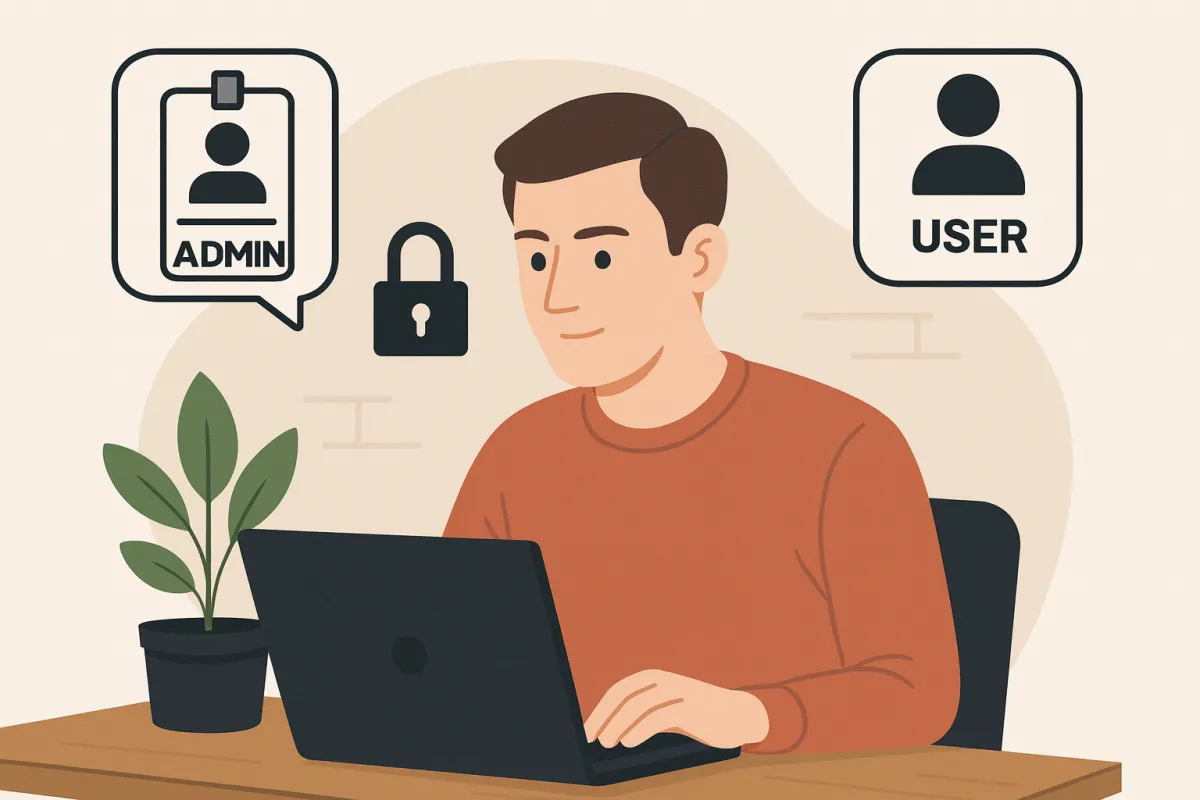
Understanding User Permissions in Your CRM
When you start using a CRM, there’s a natural temptation to hand out Admin access to everyone on your team. It feels easier: no one has to wait for you, and they can “just get on with it.” But giving everyone the keys to the castle is rarely a good idea.
In the TYA system, there are two main roles: Admin and User. Business owners will almost always be Admins because you are ultimately responsible for the account. Your internal staff, however, often only need User access until there’s a proven need for more.
Why permissions matter
Permissions are about protection as much as productivity. With the wrong access, well-meaning staff can cause real headaches.
Imagine spending weeks building a set of automations, only for a colleague to switch one on before it’s finished. The messages go out half-written, which confuses customers, and you’re left firefighting. It isn’t malicious - it’s just too much power too soon.
Permissions also support learning. When someone starts as a User, they see what they need for their day-to-day work without stumbling into areas they don’t yet understand. That helps them build confidence while keeping your system safe.
Admin vs User (in plain English)
User access is designed for day-to-day operations. Staff can:
View and update their own assigned contacts.
Book and rearrange appointments.
Reply to messages and manage simple tasks.
Work with the opportunities assigned to them.
Admin access is much broader. Admins can:
Change account settings and branding.
Build and publish automations.
Manage forms, funnels and websites.
Access every contact record and data point.
Oversee payments, products and subscriptions.
Add or remove other users entirely.
It’s a long list because Admins can do almost everything. That’s brilliant if you know what you’re doing. But it’s risky if you don’t.
How we decide who gets Admin
At TYA we use a principle called least privilege. That means giving staff the minimum access they need to perform their role, and only upgrading when it’s absolutely necessary.
We also involve the account owner every time. For example, one client’s team member needed to export a Smart List of contacts. That option only exists at Admin level. We explained the risk, asked the owner to confirm, then upgraded her permissions permanently. It was the right call, and everyone understood why.
This way, changes never happen in the dark. Owners stay in control, staff can do their work, and the system stays safe.
What can go wrong?
A real example: a small business gave Admin rights to every staff member “just in case.” One person, trying to be helpful, deleted a form they thought was outdated. The problem? It was the only contact form linked to the website. For a full week, visitors had no way to enquire, and the business missed out on new leads without even realising.
In another case, someone decided to “tidy up” by removing custom fields they believed weren’t being used. Those fields actually stored responses from the last webinar invite. Overnight, the business lost valuable insight into who had engaged, and follow-ups became guesswork.
These aren’t horror stories - they’re everyday accidents. They happen when permissions aren’t thought through.
Beyond the TYA system
The principle applies to every platform you use. Your email marketing, booking system, or payment processor all have settings that can impact money, data and reputation. If a feature allows you to charge, broadcast or bulk-edit, it should be treated as Admin-only territory.
Limiting permissions also helps with compliance. GDPR requires you to restrict access to personal data to only those who need it. Clear rules around Admin and User roles are an easy way to demonstrate accountability.
Keep it compliant and stress-free
Here are a few simple habits to make permissions work for you:
Review access quarterly. Check who has Admin rights and whether they still need them.
Remove promptly. If someone leaves or changes role, update their access immediately.
Use strong passwords and 2FA. Admins in particular should be extra secure.
Keep an audit trail. Record when access changes and who approved it.
These steps show clients and regulators that you take security seriously. They also keep your CRM tidy, which makes everyone’s life easier.
If you want to learn more about roles and permissions in the TYA system, drop us an email: [email protected]. We’ll help you establish a safe and sensible structure to keep your business running smoothly.
#TrulyYoursAgency #CRMSecurity #BusinessSupport
